Your browser does not fully support modern features. Please upgrade for a smoother experience.
Please note this is an old version of this entry, which may differ significantly from the current revision.
The building sector accounts for a significant proportion of global energy usage and carbon dioxide emissions. It is important to explore technological advances to curtail building energy usage to support the transition to a sustainable energy future.
- energy savings
- building decarbonization
- data-driven
- energy sharing
1. Renewable Energy Integration in Buildings
Renewable energy is a key solution for climate change and building decarbonization. In the roadmap developed by the International Renewable Energy Agency (IRENA), it was suggested that renewables can make up to 60% or more of many countries’ total final energy consumption in 2050 [1]. As shown in Figure 1, different renewable energy technologies can be integrated with buildings to meet electricity and heating and cooling demands. Among different technologies, solar energy holds paramount importance due to its abundance and versatility. Its widespread application has been facilitated by favorable policies, significantly reducing the implementation costs of photovoltaic (PV) panels from 4.6 cents/kWh in 2021 to 2 cents/kWh in 2030 [2]. The diversification of solar energy applications has evolved from active to passive technologies. PV systems, prevalent in mitigating power supply pollution, are anticipated to constitute over half of the total renewable energy electricity generation by 2050 [3]. The share of distributed PV generation is continuously increasing. For instance, in 2021, China’s distributed PV capacity was 108,580 MW, whereas it was 17,037, 48,559, 48,292, and 42,677 MW for Australia, Germany, Japan, and the United States, respectively. All these countries also have a high capacity for centralized PV generation [4]. PV and photovoltaic/thermal (PVT) systems can be integrated into diverse building elements, including roofs, atriums, skylights, ventilated facades, double-skin facades, and window curtains. Hybrid solar systems that combine active and passive technologies, such as Trombe walls combined with PVs, solar chimneys paired with PVs or phase change materials (PCMs), and PV-integrated ventilation blinds, have also been studied [5]. Although wind energy typically requires expansive open spaces and distance from urban areas, the proliferation of tall buildings in densely populated urban settings has opened new opportunities. Properly spaced tall buildings can harness and transfer wind energy over short distances. Wind energy has the potential to fulfill around 10%–20% of urban tall building energy demand, and urban wind energy systems predominantly comprise wind turbines, typically ranging from 1 to 20 kW, placed on buildings and adjacent grounds [6]. However, careful consideration of local environmental conditions and urban boundary layers is essential for appropriate design and efficient deployment of wind energy systems [7]. Due to the limited initial exploration, many wind turbine projects failed to meet output expectations after a few years of operation [8]. Biomass energy, accounting for approximately 10% of global primary energy demand, represents a vital renewable energy source [9]. Biomass-fired heaters, in conjunction with heat pumps, can provide an economically viable solution for building heating needs. These heaters can cover up to 65% of space heating demand, effectively decreasing reliance on the grid and heat pumps [10]. Furthermore, biomass-derived porous carbon materials resulting from pyrolysis can serve as favorable supporting materials for shape-stabilized PCMs, exhibiting beneficial attributes such as micropore structure, chemical stability, and the potential for integration into construction materials like cement bricks/blocks [11]. There are other types of renewable energy, such as micro-hydro and hydrogen fuel cells, that have been tried in buildings. Micro-hydroelectric systems can harness the energy of flowing water to drive turbines, producing electricity, and are often employed by homeowners in remote areas. While the utilization of hydrogen energy in buildings has not yet been widespread, it is being investigated as a potential means of decarbonizing heating and cooling in buildings. The prevalent approach involves fuel cells, which can generate both electricity and heat for buildings. It is still in its infancy stage, with ongoing projects to explore its potential [12]. However, the adoption of hydrogen energy in buildings faces challenges such as high production costs, limited infrastructure, and safety concerns associated with handling hydrogen, which restricts its widespread integration in buildings [13].
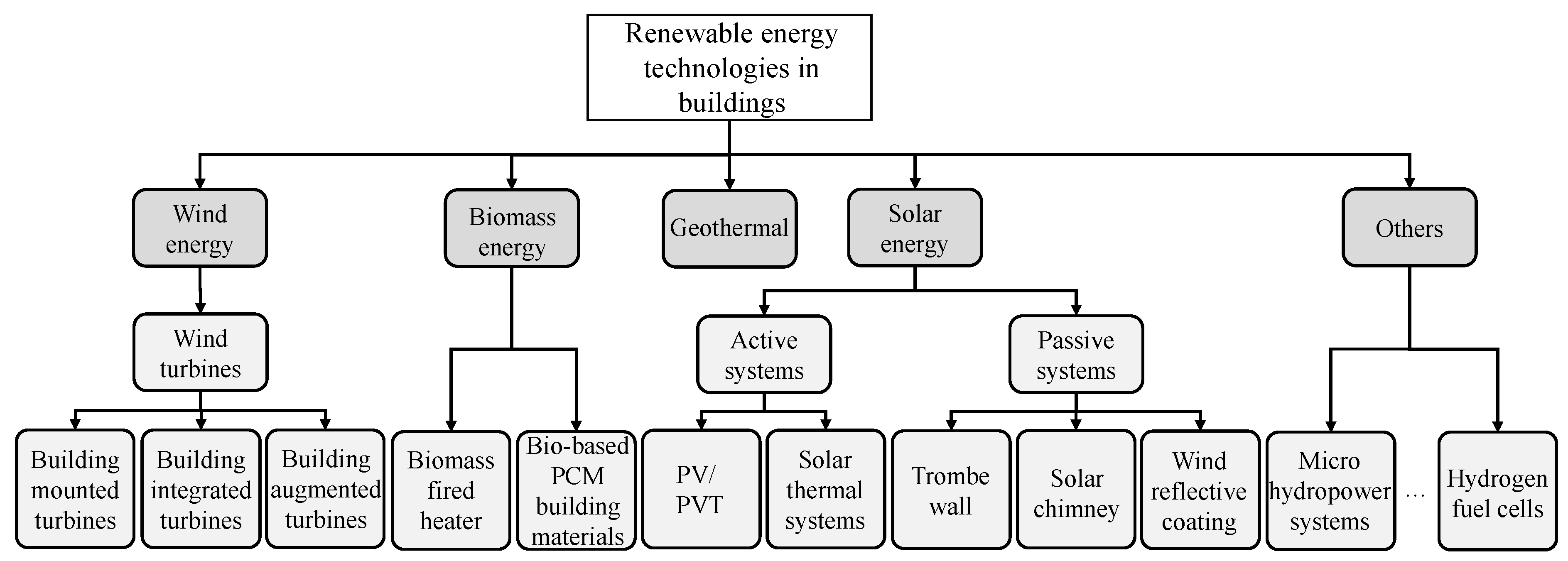
Figure 1. Integration of renewable energy in buildings.
2. Thermal Energy Storage
Ensuring a reliable energy supply is imperative due to the inconsistent availability and seasonal variations of renewable energy sources. To address the intermittence of renewable energy supply and temporal disparities, thermal energy storage (TES) has emerged as a promising solution. The ability of TES systems to provide flexible assets to wind and solar energy resources increases the overall value of TES in the modern energy supply chain. The 2020 innovation outlook on thermal energy storage published by the International Renewable Energy Agency (IRENA) [14] demonstrated that the TES global market will grow to triple the current size by 2030, which indicates an increase from 234 GWh in 2019 to 800 GWh within a decade. Moreover, it is expected that the investments in TES technologies for cooling and power applications will surge from 13 billion USD to 28 billion USD in the same period [14]. In buildings, TES can be mainly used for demand shifting and load modulation through integration with heat pumps and hot water storage systems as well as with building envelopes [15].
Sensible and latent energy storage systems are the two major TES systems used in buildings. Sensible energy storage systems require large volumes compared with that of latent energy storage systems. However, currently, sensible energy storage systems in the form of hot water tanks are among the most used TES systems in buildings because of their low cost and low complexities [16]. Research has shown that latent energy storage systems are more effective than sensible energy storage systems, and they can be used in different ways to enhance the overall thermal performance of buildings and building energy systems. Phase change materials (PCMs) have demonstrated high performance and practicality to be used as the leading latent energy storage medium in building applications. Figure 2 illustrates different applications of PCMs in buildings, where PCMs can be integrated with building envelope and building energy systems for enhanced performance.
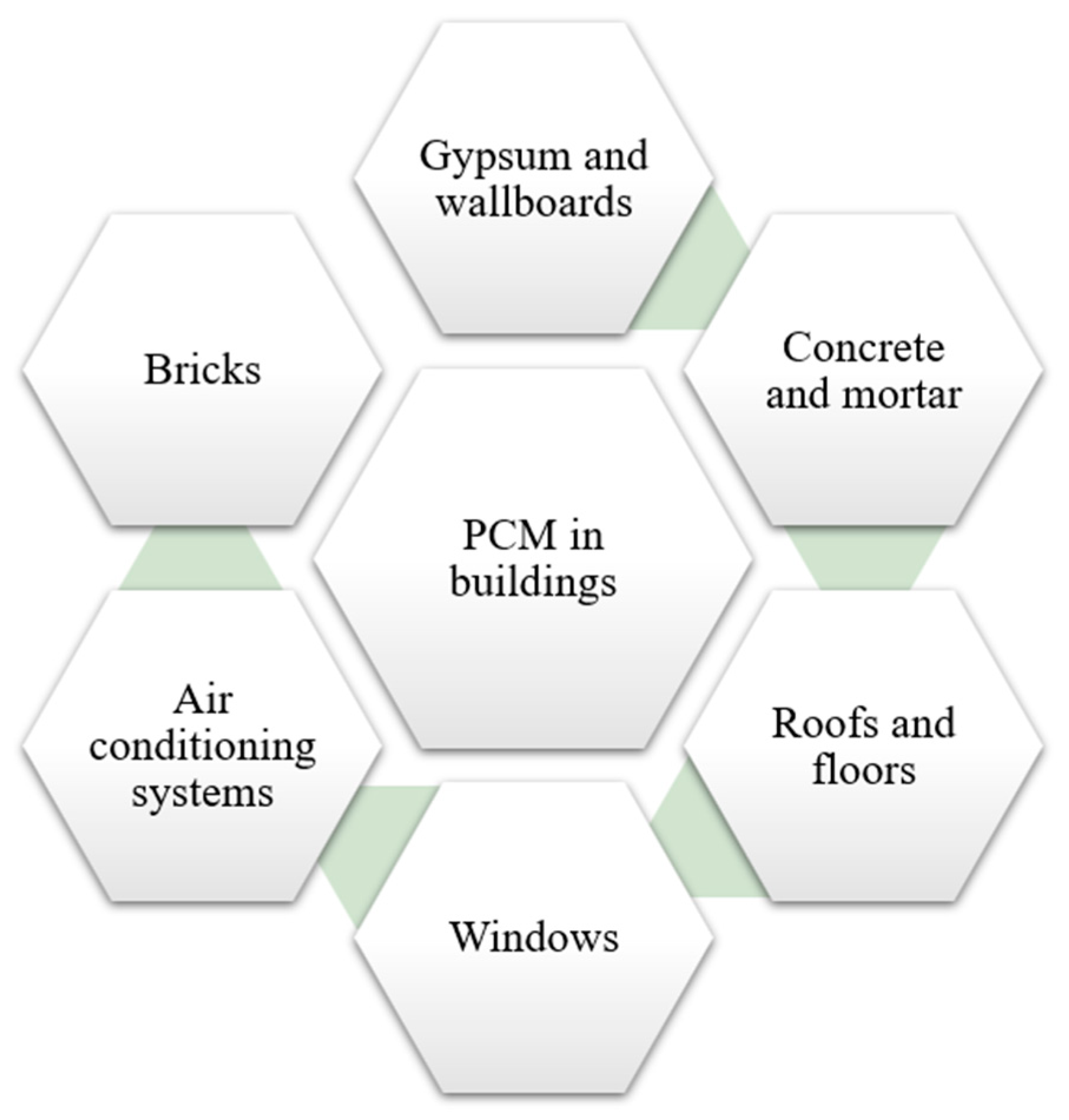
Figure 2. Integration of PCMs in buildings.
Various benefits and limitations associated with the use of PCMs for different applications in buildings have been reported. For instance, in [17], it was illustrated that the integration of PCMs with gypsum and wallboards can result in enhanced reliability and durability over extended durations, though with drawbacks, such as potential deposition of volatile pollutants on surfaces and limited fire resistance. Another study demonstrated that the excessive use of hydrated salt PCMs in concrete can jeopardize material strength, but incorporating paraffin can enhance thermal storage while maintaining compressive strength [18]. Recommendations for improving thermal efficiency and mitigating supercooling involve the introduction of an internal ventilation system within PCM roof and floor systems to enhance convective heat transfer across the PCM surface [19]. For optimal energy efficiency, lighter mass PCMs are suggested when combined with air conditioning systems to minimize undesired heat transfer between upper and lower PCM layers. Furthermore, a well-designed operational strategy for the combined air conditioning-PCM system can significantly improve the overall energy performance [20]. The effective integration of PCMs into bricks requires the selection of PCMs with melting temperatures closely aligned with room temperature to maximize performance enhancement [21]. Thin PCMs with expansive heat transfer areas are preferred over thicker alternatives within bricks, and a staggered arrangement of PCMs can enhance the heat exchange between the PCM and brick materials [22].
A range of studies have also demonstrated the high value of TES systems in increasing the efficiency and demand flexibility of buildings and building energy systems, contributing to the reduction in overall building emissions. For instance, in [23], a TES system filled with a PCM was used to shift the peak demand of an HVAC system to off-peak demand hours. The results showed that the TES system integration with the HVAC system helped reduce peak demand by 73% and provided 37.1% cost savings for the analyzed period. Tuncbilek et al. [15] reviewed a number of studies involving the use of TES for enhanced flexibility of buildings and building energy systems. The research demonstrated that the use of TES can reduce overall energy consumption, operational costs, and emissions of buildings. Overall, the TES systems will be a central part of decarbonizing the building and power sectors, along with providing opportunities to reduce overall operating costs and increase energy efficiency. However, lack of technology readiness, awareness, policy, and market mechanisms are among the main bottlenecks that are important to be addressed to explore the full potential of TES technologies in building applications [14].
3. Heat Pump Technologies
Heat pumps are increasingly recognized as a key and cost-effective solution for the electrification of heating systems and tackling carbon emissions, supporting the goal of achieving a net zero energy future [24]. The International Energy Agency (IEA) estimated that the installed number of heat pumps will rise from 180 million globally in 2020 to around 600 million in 2030 [25], and heat pumps could reduce global CO2 emissions by at least 500 million tons in 2030 [26]. A recent report published by the Australian Energy Efficiency Council and the Australian Alliance for Energy Productivity concluded that ambitious deployment of heat pumps in different buildings and industrial processes could reduce energy usage by up to 14,391 PJ and save 746 Mt of greenhouse gas (GHG) emissions by 2050 [27].
Heat pumps are generally energy-efficient and can be powered by renewable energy resources. They can be easily integrated with thermal energy storage systems for load management, such as load shifting and peak demand reduction. Different types of heat pumps are now available in the market. According to the types of heat sources used, heat pumps can be classified into air-source heat pumps, water-source heat pumps, and ground-source heat pumps. It is noted that ground-source heat pumps are simply a variation of water-source heat pumps that are capable of working with a broader range of source water temperatures. Other heat pumps include absorption heat pumps and desiccant heat pumps. An absorption heat pump is a heat pump driven by thermal energy instead of electricity. It is most cost-effective when low-cost thermal energy is available and in applications where access to electricity is expensive. Desiccant heat pumps are developed based on the vapor compression cycle but with desiccant materials coated on heat exchangers for dehumidification. Such heat pumps are suitable for applications with strict humidity control and in tropical and subtropical climate conditions.
Among different heat pump technologies, ground-source heat pump (GSHP) systems are receiving increasing attention [28][29] as they can take advantage of the relatively stable earth temperature to achieve heat extraction from or heat rejection to the ground through ground heat exchangers to meet different air-conditioning requirements. The long-term operation of stand-alone GSHP systems may lead to ground thermal imbalance, resulting in system performance degradation [30]. Hybrid GSHP systems assisted with supplementary devices have been considered to be a solution to alleviate soil and system performance deterioration [31]. In addition to environmental and energy performance improvements brought by the application of auxiliary devices, obvious economic benefits can also be achieved, especially in terms of cost savings in the upfront purchase and installation of ground heat exchangers [32][33]. As shown in Figure 3, different auxiliary devices can be coupled with GSHP systems [34] to increase the overall efficiency and mitigate ground thermal imbalance.
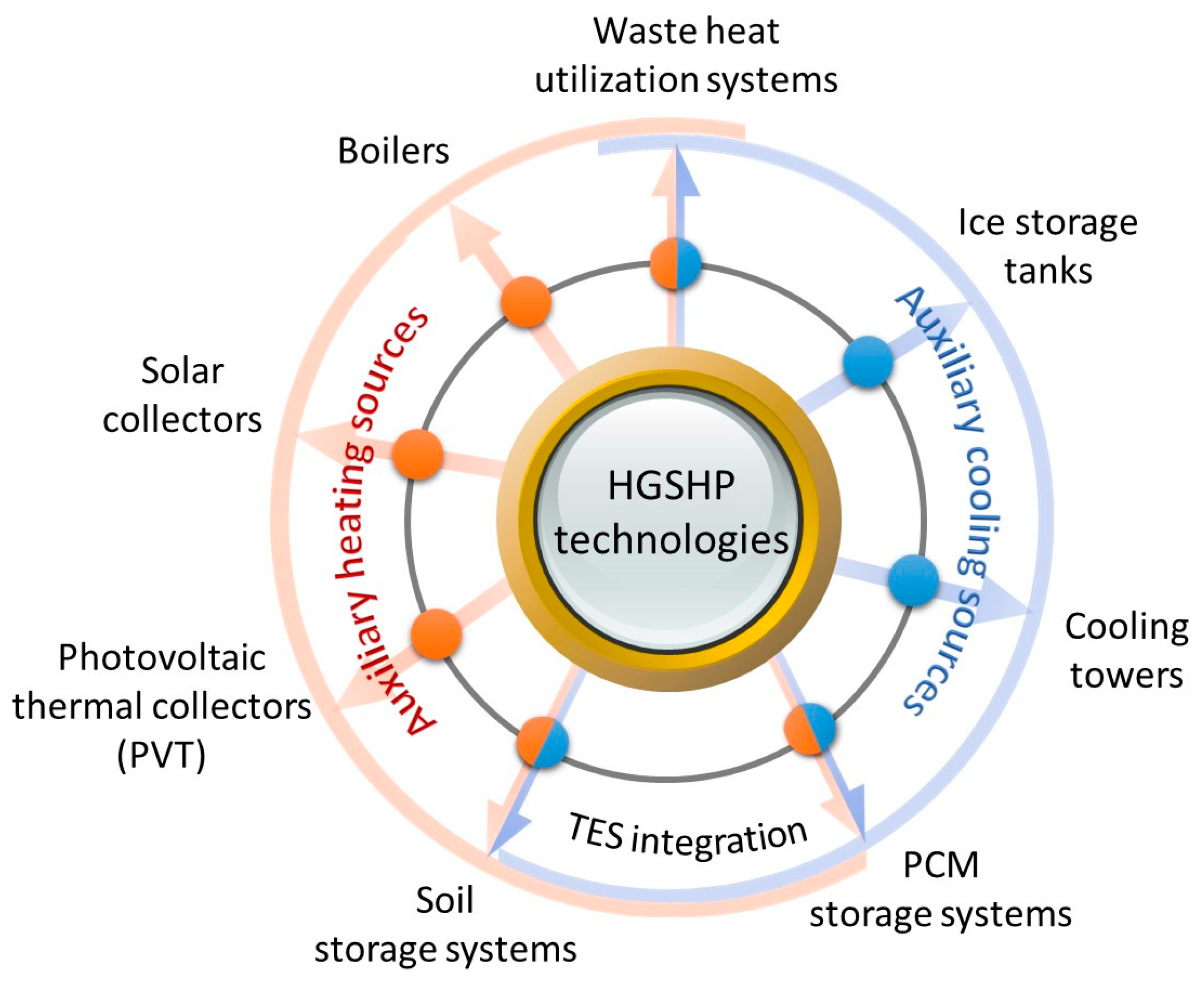
Figure 3. Hybrid GSHP systems integrated with different auxiliary devices.
Heat pumps will remain the main solution to provide heating and cooling to buildings in the coming decades, and cost-effective solutions/strategies to further improve their efficiency are needed. Solar heat pumps are also among the interesting solutions.
4. Thermal Energy Recovery and Sharing
Thermal energy recovery and sharing can capture waste energy from one system and redistribute the captured waste energy to nearby systems or end-users [35]. Figure 4 illustrates an example of a thermal energy recovery and sharing system. Such a system can provide simultaneous cooling and heating to interconnected networks of different buildings or utilities, leading to enhanced energy efficiency and reduced carbon emissions. Thermal energy recovery and sharing systems can effectively harness and re-utilize otherwise wasted energy and further improve resource utilization and sustainability [36].
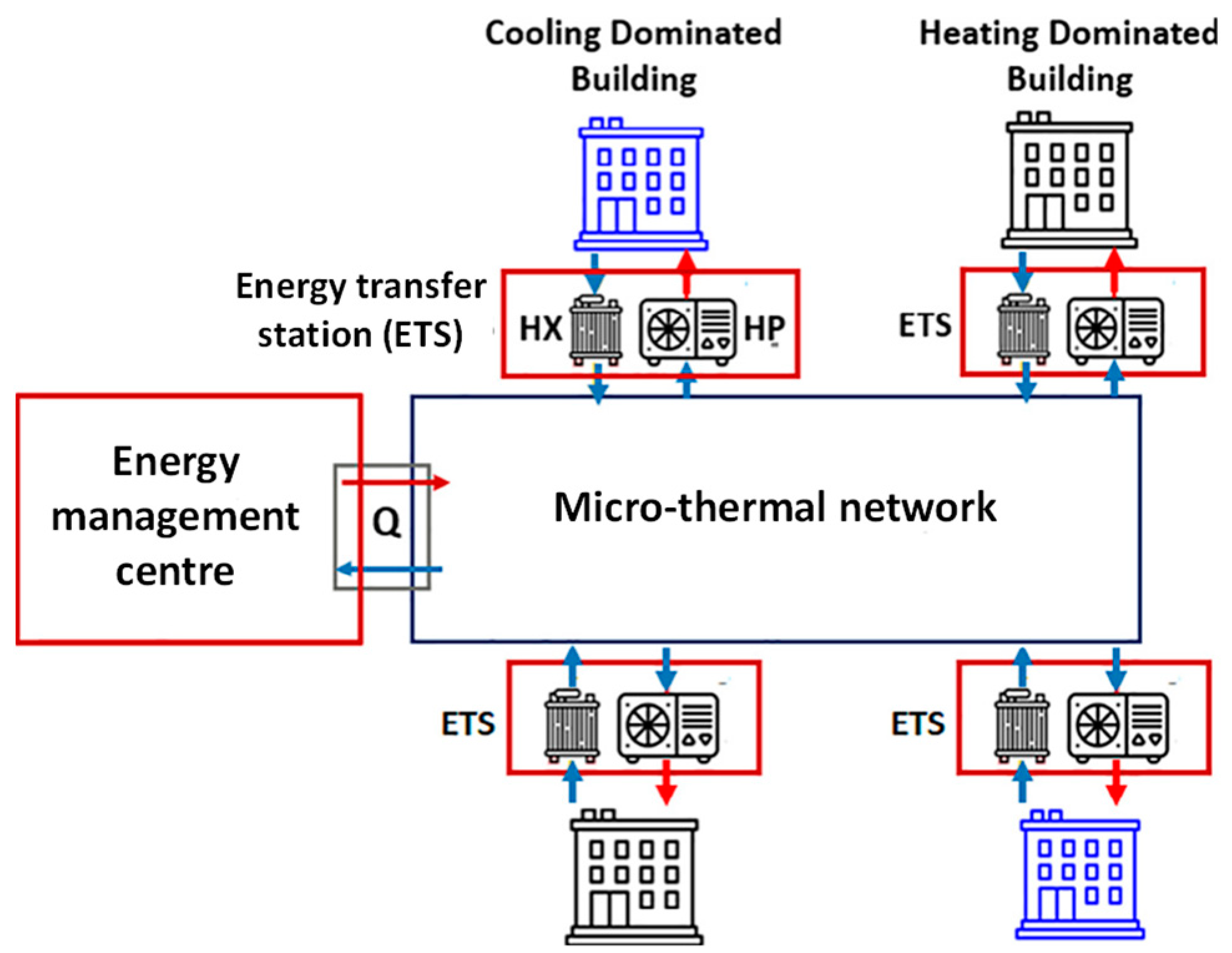
Figure 4. Illustration of a thermal energy sharing system, where HX represents the heat exchanger, and HP indicates the heat pump [35].
The cooling-dominated buildings or utilities in thermal energy sharing systems can include cooling systems of data centers, ice sports centers, and supermarkets, as well as industrial processes. Data centers can produce a substantial amount of waste heat during the cooling process of their equipment [37]. The temperature of this waste heat varies depending on the different types of cooling systems employed [38]. The cooling systems in supermarkets and ice rinks can also generate a significant amount of waste heat by providing the necessary cooling energy, and the waste heat from supermarkets can reach temperatures of more than 50 °C [39][40][41]. Many industrial processes also generate significant amounts of waste heat, often at high temperatures, making them a potential heat source [42]. These potential heat sources often exhibit stable and large heat generation characteristics, providing ample opportunities for integration into thermal energy recovery and sharing systems.
One notable utilization of waste heat is to supply thermal energy for heating purposes, such as integrating with district heating (DH) networks [43][44] and preheating swimming pools [45][46]. Recent studies have demonstrated the potential benefits of thermal energy sharing systems. Pan et al. [47] examined the performance of an adsorption chiller, which was powered by thermal energy recovered from a data center. Araya et al. [48] presented a lab-scale Organic Rankine Cycle (ORC) system, which was designed to operate using low-grade waste heat obtained from a server rack within a data center. Abdalla et al. [35] introduced a reduced model of a thermal energy sharing system, which effectively allowed thermal energy to be shared among different facilities. It was found that such a system could fulfill 48% of the overall heating demand, and by incorporating a water tank, an additional 12% of thermal energy could be covered, resulting in a remarkable 74% reduction in total carbon emissions. In another study by Wirtz et al. [49], an optimal design approach based on Linear Programming was developed for the design of the 5th-generation district heating system, as shown in Figure 5. It was found that the optimized system achieved a remarkable 42% cost reduction and an impressive 56% decrease in carbon emissions through component selection and optimal sizing. Similarly, a study described in [50] focused on thermal energy sharing between the cooling system of a data center and a multi-unit residential building. The findings indicated that energy sharing reduced the heating requirements of the building by 55% and the cooling requirements of the data center by 50%. Zhang et al. [51] developed an economic evaluation model for waste heat utilization of data centers in district heating networks. It was reported that reusing waste heat from data centers could achieve both economic and environmental benefits. Li et al. [52] examined two thermal energy storage methods in thermal energy sharing systems, including short-term storage using a water tank and long-term storage using a borehole thermal energy storage system. The water tank was found to effectively reduce peak loads by 31% and lower annual energy costs by 5%, and the borehole system can increase waste heat utilization from 77% to 96% and achieve an annual reduction of 8% in CO2 emissions. By dynamically optimizing the parameters of the water tank, an optimal storage size was determined by considering the trade-off between the payback period and heating cost savings. It was found that prosumers could save up to 9% of their annual heating costs [53]. Wang et al. [54] proposed an efficient system using CO2 direction-expansion GSHPs to harvest the waste heat from a data center for heating surrounding buildings. It was found that this system could reduce energy consumption by nearly 50% when compared to air-source heat pumps.

Figure 5. The 5th generation district heating system [49].
In addition to thermal energy sharing, electricity generated by distributed renewables can also be shared among different buildings. In summary, while thermal energy recovery and sharing systems showed significant advantages in terms of GHG reduction, cost savings, energy efficiency, and waste heat utilization, further research is needed to fully explore opportunities to increase their overall performance.
5. Retrofits for Increased Energy Efficiency
Most buildings are existing buildings, and retrofitting of existing buildings has been widely accepted as one of the effective measures to achieve building decarbonization. According to a report recently published by Market Research Future [55], the global energy retrofit systems market was valued at USD 150.9 billion in 2022, and it was projected to increase to USD 272.8 billion by 2032 with a compound annual growth rate of 6.8% from 2023 to 2032. In general, there are two types of retrofits, including shallow retrofits and deep retrofits. Shallow retrofits focus on small alternations by using low-cost or no-cost energy conservation measures, while deep retrofits focus on major renovations, and a holistic approach is often required to systematically explore co-benefits from energy retrofits and determine the best retrofit options. A recent study showed that stock-wide implementation of deep retrofits in existing buildings of eight cities (i.e., Braga, Cairo, Dublin, Florianopolis, Kiel, Middlebury, Montreal, and Singapore) can reduce energy use and carbon emissions by up to 66% and 84%, respectively, without additional grid decarbonization efforts [56]. Based on the review of energy retrofit policies for the UK’s existing buildings, it was concluded that deep retrofits are needed for most UK’s existing housing stock to bring more flexible financing schemes and reduce carbon emissions [57]. Figure 6 illustrates an example of deep retrofit of a typical Australian timber framed fibro house to a state-of-the-art net zero energy home through a combination of architectural alternation, envelop renovation, facilitating daylighting and natural ventilation, and integration of renewable energy systems and highly efficient air conditioning solutions.

Figure 6. Illustration of deep retrofit of a typical Australian timber framed fibro house.
In the past, the selection and quantification of co-benefits of retrofit measures were often achieved with the assistance of energy auditing, building performance simulations, and domain expertise. With the continued development of low-cost sensors, massive data can be readily available from existing buildings, and this presents significant opportunities to use machine learning and big data analytics to optimize the retrofit process and explore energy-saving potential. Figure 7 summarizes different retrofit methodologies for large-scale building retrofits [58]. Based on the data collected from existing buildings, the bottom-up approach focuses on retrofitting individual buildings by analyzing different retrofit strategies and then extrapolates the results to larger scales, while the top-down approach focuses on using the available datasets to explore retrofit potential, establishing benchmarks, and providing guidelines for the development of energy retrofit policies [59].
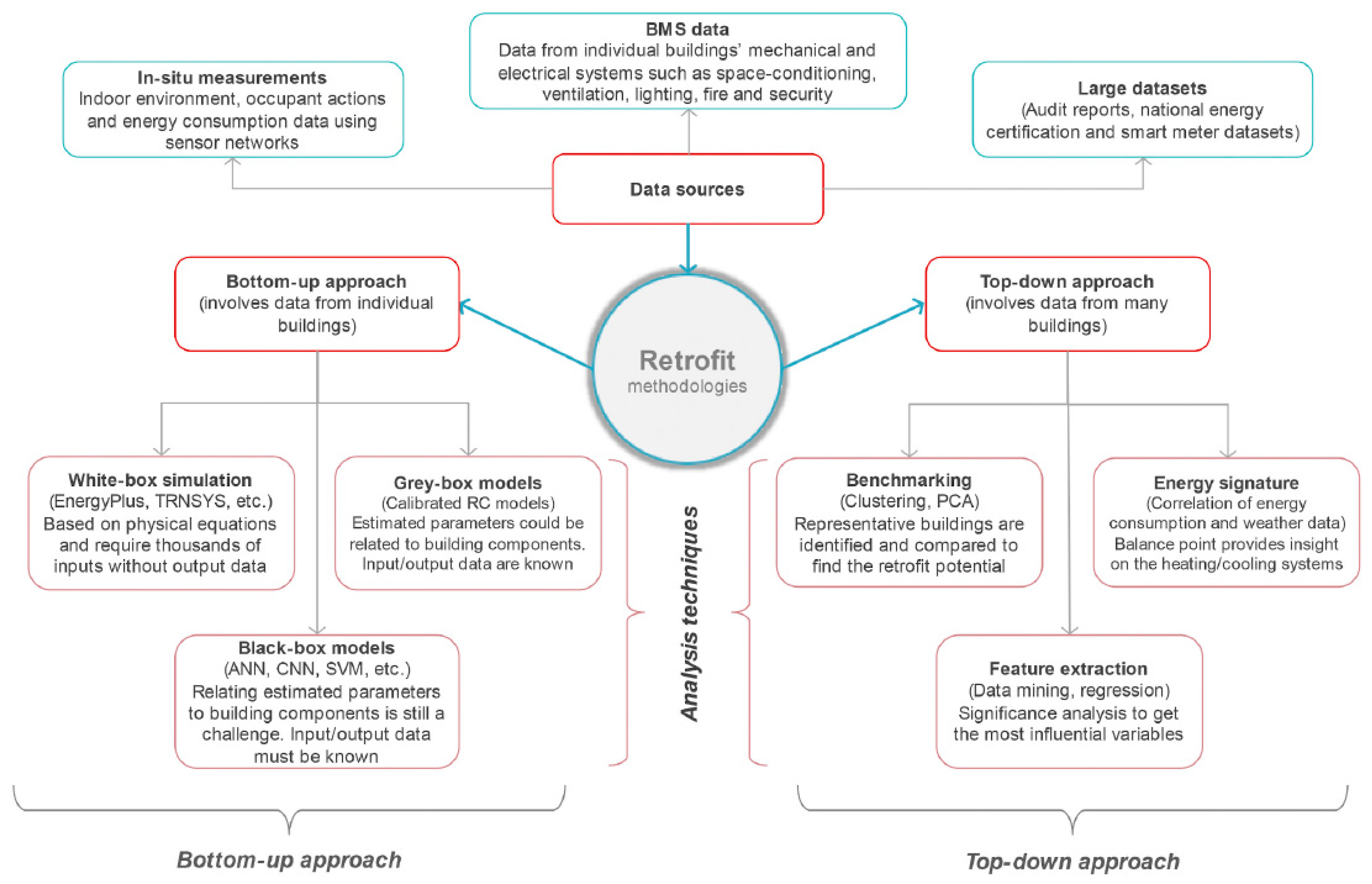
Figure 7. Illustration of different retrofit approaches [58].
To maximize the benefits of existing building retrofits, significant efforts are still needed. More rigorous retrofit methods should be developed to optimize the selection of the most cost-effective retrofit options. Although many retrofit techniques can reduce building energy consumption and carbon footprint, their longevity has rarely been considered [60]. Circular economy is the key to sustainable development, and applying circular economy principles to building retrofits is an interesting direction to reduce the use of building materials and provide significant carbon benefits. The availability of large datasets from existing buildings will offer great opportunities to use state-of-the-art machine learning methods and big data analytics to explore useful information, providing new potentials to support the decision-making process and accelerating the selection and optimization of retrofit measures.
This entry is adapted from the peer-reviewed paper 10.3390/buildings13102658
References
- International Renewable Energy Agency. Global Energy Transformation: A Roadmap to 2050; International Renewable Energy Agency: Masdar City, United Arab Emirates, 2018.
- IEA. Funding for Thin Film Technologies for Solar PV—Policies. Available online: https://www.iea.org/policies/13275-funding-for-thin-film-technologies-for-solar-pv (accessed on 9 September 2023).
- Kuşkaya, S.; Bilgili, F.; Muğaloğlu, E.; Khan, K.; Hoque, M.E.; Toguç, N. The Role of Solar Energy Usage in Environmental Sustainability: Fresh Evidence through Time-Frequency Analyses. Renew. Energy 2023, 206, 858–871.
- Statista. Grid-Connected Solar PV Capacity by Select Country. Available online: https://www.statista.com/statistics/665864/solar-capacity-in-selected-countries-by-grid-connection/ (accessed on 28 September 2023).
- Bosu, I.; Mahmoud, H.; Ookawara, S.; Hassan, H. Applied Single and Hybrid Solar Energy Techniques for Building Energy Consumption and Thermal Comfort: A Comprehensive Review. Sol. Energy 2023, 259, 188–228.
- Kwok, K.C.S.; Hu, G. Wind Energy System for Buildings in an Urban Environment. J. Wind Eng. Ind. Aerodyn. 2023, 234, 105349.
- Arnfield, A.J. Two Decades of Urban Climate Research: A Review of Turbulence, Exchanges of Energy and Water, and the Urban Heat Island. Int. J. Climatol. 2003, 23, 1–26.
- NBC10 Philadelphia. What Happened to the Wind Turbines that Twirled above Philadelphia Eagles’ Lincoln Financial Field? Available online: https://www.nbcphiladelphia.com/news/sports/nfl/philadelphia-eagles/what-happened-to-the-wind-turbines-that-twirled-above-philadelphia-eagles-lincoln-financial-field/169875/ (accessed on 30 August 2023).
- Zhu, Y.; Li, W.; Li, J.; Li, H.; Wang, Y.; Li, S. Thermodynamic Analysis and Economic Assessment of Biomass-Fired Organic Rankine Cycle Combined Heat and Power System Integrated with CO2 Capture. Energy Convers. Manag. 2020, 204, 112310.
- Behzadi, A.; Thorin, E.; Duwig, C.; Sadrizadeh, S. Supply-Demand Side Management of a Building Energy System Driven by Solar and Biomass in Stockholm: A Smart Integration with Minimal Cost and Emission. Energy Convers. Manag. 2023, 292, 117420.
- Jiang, T.; Zhang, Y.; Olayiwola, S.; Lau, C.K.; Fan, M.; Ng, K.; Tan, G. Biomass-Derived Porous Carbons Support in Phase Change Materials for Building Energy Efficiency: A Review. Mater. Today Energy 2022, 23, 100905.
- Lancaster University. Lancaster Hydrogen Hub. Available online: https://www.lancaster.ac.uk/energy-lancaster/research/hydrogen-hub/ (accessed on 30 August 2023).
- Wu, Y.; Zhong, L. An Integrated Energy Analysis Framework for Evaluating the Application of Hydrogen-Based Energy Storage Systems in Achieving Net Zero Energy Buildings and Cities in Canada. Energy Convers. Manag. 2023, 286, 117066.
- International Renewable Energy Agency. International Renewable Energy Agency Innovation Outlook: Thermal Energy Storage; International Renewable Energy Agency: Abu Dhabi, United Arab Emirates, 2020; p. 144.
- Tunçbilek, E.; Yıldız, Ç.; Arıcı, M.; Ma, Z.; Awan, M.B. Thermal Energy Storage for Enhanced Building Energy Flexibility. Build. Energy Flex. Demand Manag. 2023, 89–119.
- Faisal Ahmed, S.; Khalid, M.; Vaka, M.; Walvekar, R.; Numan, A.; Khaliq Rasheed, A.; Mujawar Mubarak, N. Recent Progress in Solar Water Heaters and Solar Collectors: A Comprehensive Review. Therm. Sci. Eng. Prog. 2021, 25, 100981.
- Zhan, H.; Mahyuddin, N.; Sulaiman, R.; Khayatian, F. Phase Change Material (PCM) Integrations into Buildings in Hot Climates with Simulation Access for Energy Performance and Thermal Comfort: A Review. Constr. Build. Mater. 2023, 397, 132312.
- Asadi, I.; Baghban, M.H.; Hashemi, M.; Izadyar, N.; Sajadi, B. Phase Change Materials Incorporated into Geopolymer Concrete for Enhancing Energy Efficiency and Sustainability of Buildings: A Review. Case Stud. Constr. Mater. 2022, 17, e01162.
- Li, C.; Wen, X.; Cai, W.; Yu, H.; Liu, D. Phase Change Material for Passive Cooling in Building Envelopes: A Comprehensive Review. J. Build. Eng. 2023, 65, 105763.
- Qiao, X.; Kong, X.; Fan, M. Phase Change Material Applied in Solar Heating for Buildings: A Review. J. Energy Storage 2022, 55.
- Schmerse, E.; Ikutegbe, C.A.; Auckaili, A.; Farid, M.M. Using PCM in Two Proposed Residential Buildings in Christchurch, New Zealand. Energies 2020, 13, 6025.
- Gao, Y.; Meng, X. A Comprehensive Review of Integrating Phase Change Materials in Building Bricks: Methods, Performance and Applications. J. Energy Storage 2023, 62, 106913.
- Awan, M.B.; Ma, Z. Building Energy Flexibility: Definitions, Sources, Indicators, and Quantification Methods. Build. Energy Flex. Demand Manag. 2023, 17–40.
- Rosenow, J.; Gibb, D.; Nowak, T.; Lowes, R. Heating up the Global Heat Pump Market. Nat. Energy 2022, 7, 901–904.
- IEA. Installation of about 600 Million Heat Pumps Covering 20% of Buildings Heating Needs Required by 2030—Analysis. Available online: https://www.iea.org/reports/installation-of-about-600-million-heat-pumps-covering-20-of-buildings-heating-needs-required-by-2030 (accessed on 13 August 2023).
- IEA. The Future of Heat Pumps; IEA: Paris, France, 2022.
- Energy Efficiency Council. Harnessing Heat Pumps for Net Zero The Role of Heat Pumps in Saving Energy and Cutting Emissions; Energy Efficiency Council: Melbourne, Australia, 2023.
- Gaur, A.S.; Fitiwi, D.Z.; Curtis, J. Heat Pumps and Our Low-Carbon Future: A Comprehensive Review. Energy Res. Soc. Sci. 2021, 71, 101764.
- Ma, Z.; Xia, L.; Gong, X.; Kokogiannakis, G.; Wang, S.; Zhou, X. Recent Advances and Development in Optimal Design and Control of Ground Source Heat Pump Systems. Renew. Sustain. Energy Rev. 2020, 131, 110001.
- Cai, W.; Wang, F.; Chen, S.; Chen, C.; Zhang, Y.; Kolditz, O.; Shao, H. Importance of Long-Term Ground-Loop Temperature Variation in Performance Optimization of Ground Source Heat Pump System. Appl. Therm. Eng. 2022, 204, 117945.
- Lee, M.; Cha, D.; Yun, S.; Yoon, S.M.; Kim, Y. Comparative Heating Performance Evaluation of Hybrid Ground-Source Heat Pumps Using Serial and Parallel Configurations with the Application of Ground Heat Exchanger. Energy Convers. Manag. 2021, 229, 113743.
- Bae, S.; Nam, Y. Economic and Environmental Analysis of Ground Source Heat Pump System According to Operation Methods. Geothermics 2022, 101, 102373.
- Lee, M.; Kim, J.; Shin, H.H.; Cho, W.; Kim, Y. CO2 Emissions and Energy Performance Analysis of Ground-Source and Solar-Assisted Ground-Source Heat Pumps Using Low-GWP Refrigerants. Energy 2022, 261, 125198.
- Xu, L.; Pu, L.; Zhang, S.; Li, Y. Hybrid Ground Source Heat Pump System for Overcoming Soil Thermal Imbalance: A Review. Sustain. Energy Technol. Assess. 2021, 44, 101098.
- Abdalla, A.; Mohamed, S.; Bucking, S.; Cotton, J.S. Modeling of Thermal Energy Sharing in Integrated Energy Communities with Micro-Thermal Networks. Energy Build. 2021, 248, 111170.
- Lindhe, J.; Javed, S.; Johansson, D.; Bagge, H. A Review of the Current Status and Development of 5GDHC and Characterization of a Novel Shared Energy System. Sci. Technol. Built Environ. 2022, 28, 595–609.
- Huang, P.; Copertaro, B.; Zhang, X.; Shen, J.; Löfgren, I.; Rönnelid, M.; Fahlen, J.; Andersson, D.; Svanfeldt, M. A Review of Data Centers as Prosumers in District Energy Systems: Renewable Energy Integration and Waste Heat Reuse for District Heating. Appl. Energy 2020, 258, 114109.
- Ebrahimi, K.; Jones, G.F.; Fleischer, A.S. A Review of Data Center Cooling Technology, Operating Conditions and the Corresponding Low-Grade Waste Heat Recovery Opportunities. Renew. Sustain. Energy Rev. 2014, 31, 622–638.
- Giunta, F.; Sawalha, S. Techno-Economic Analysis of Heat Recovery from Supermarket’s CO2 Refrigeration Systems to District Heating Networks. Appl. Therm. Eng. 2021, 193, 117000.
- Mateu-Royo, C.; Sawalha, S.; Mota-Babiloni, A.; Navarro-Esbrí, J. High Temperature Heat Pump Integration into District Heating Network. Energy Convers. Manag. 2020, 210, 112719.
- Reclaim Waste Heat from Rink—Arena Guide. Available online: https://arena-guide.com/go-green/heat-re-claim-heat-recovery/ (accessed on 26 June 2023).
- Pourfarzad, H.; Saremia, M.; Ganjali, M.R. A Novel Tri-Generation Energy System Integrating Solar Energy and Industrial Waste Heat. J. Therm. Eng. 2021, 7, 1067–1078.
- Davies, G.F.; Maidment, G.G.; Tozer, R.M. Using Data Centres for Combined Heating and Cooling: An Investigation for London. Appl. Therm. Eng. 2016, 94, 296–304.
- Khosravi, A.; Laukkanen, T.; Vuorinen, V.; Syri, S. Waste Heat Recovery from a Data Centre and 5G Smart Poles for Low-Temperature District Heating Network. Energy 2021, 218, 119468.
- Kuyumcu, M.E.; Tutumlu, H.; Yumrutaş, R. Performance of a Swimming Pool Heating System by Utilizing Waste Energy Rejected from an Ice Rink with an Energy Storage Tank. Energy Convers. Manag. 2016, 121, 349–357.
- Oró, E.; Allepuz, R.; Martorell, I.; Salom, J. Design and Economic Analysis of Liquid Cooled Data Centres for Waste Heat Recovery: A Case Study for an Indoor Swimming Pool. Sustain. Cities Soc. 2018, 36, 185–203.
- Pan, Q.; Peng, J.; Wang, R. Experimental Study of an Adsorption Chiller for Extra Low Temperature Waste Heat Utilization. Appl. Therm. Eng. 2019, 163, 114341.
- Araya, S.; Wemhoff, A.P.; Jones, G.F.; Fleischer, A.S. Study of a Lab-Scale Organic Rankine Cycle for the Ultra-Low-Temperature Waste Heat Recovery Associated with Data Centers. J. Electron. Packag. Trans. ASME 2021, 143, 021001.
- Wirtz, M.; Kivilip, L.; Remmen, P.; Müller, D. 5th Generation District Heating: A Novel Design Approach Based on Mathematical Optimization. Appl. Energy 2020, 260, 114158.
- Murphy, A.R.; Fung, A.S. Techno-Economic Study of an Energy Sharing Network Comprised of a Data Centre and Multi-Unit Residential Buildings for Cold Climate. Energy Build. 2019, 186, 261–275.
- Zhang, C.; Luo, H.; Wang, Z. An Economic Analysis of Waste Heat Recovery and Utilization in Data Centers Considering Environmental Benefits. Sustain. Prod. Consum. 2022, 31, 127–138.
- Li, H.; Hou, J.; Hong, T.; Ding, Y.; Nord, N. Energy, Economic, and Environmental Analysis of Integration of Thermal Energy Storage into District Heating Systems Using Waste Heat from Data Centres. Energy 2021, 219.
- Li, H.; Hou, J.; Tian, Z.; Hong, T.; Nord, N.; Rohde, D. Optimize Heat Prosumers’ Economic Performance under Current Heating Price Models by Using Water Tank Thermal Energy Storage. Energy 2022, 239, 122103.
- Wang, X.; Li, H.; Wang, Y.; Zhao, J.; Zhu, J.; Zhong, S.; Li, Y. Energy, Exergy, and Economic Analysis of a Data Center Energy System Driven by the CO2 Ground Source Heat Pump: Prosumer Perspective. Energy Convers. Manag. 2021, 232, 113877.
- Energy Retrofit Systems Market Size, Share, Forecast. 2023. Available online: https://www.marketresearchfuture.com/reports/energy-retrofit-systems-market-11758 (accessed on 13 August 2023).
- Ang, Y.Q.; Berzolla, Z.M.; Letellier-Duchesne, S.; Reinhart, C.F. Carbon Reduction Technology Pathways for Existing Buildings in Eight Cities. Nat. Commun. 2023, 14, 1689.
- Alabid, J.; Bennadji, A.; Seddiki, M. A Review on the Energy Retrofit Policies and Improvements of the UK Existing Buildings, Challenges and Benefits. Renew. Sustain. Energy Rev. 2022, 159, 112161.
- Deb, C.; Schlueter, A. Review of Data-Driven Energy Modelling Techniques for Building Retrofit. Renew. Sustain. Energy Rev. 2021, 144, 110990.
- Thrampoulidis, E.; Hug, G.; Orehounig, K. Approximating Optimal Building Retrofit Solutions for Large-Scale Retrofit Analysis. Appl. Energy 2023, 333, 120566.
- Densley Tingley, D. Embed Circular Economy Thinking into Building Retrofit. Commun. Eng. 2022, 1, 28.
This entry is offline, you can click here to edit this entry!
